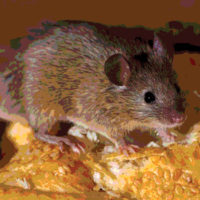Integrated Pest Management under FSMA: 6 Steps to Compliance

We’re 2 years into the implementation of the new Food Safety Modernization Act (FSMA) compliance requirements for food and beverage processors. There’s no doubt FSMA has made significant impacts in day-to-day operations, risk-mitigation programs, and even the high-level priorities of most processors. But we’ve also seen one area remain commonly overlooked: pest management. The entire text of FSMA only mentions the word “pest” once or twice, so it’s easy to see why many have missed FSMA’s important implications for their integrated pest management (IPM) program. In fact, the key paradigm shift of FSMA—moving the industry from reactive to preventive risk management.
Best Practices for Preventative, Risk-Based IPM Under FSMA
Many processors did recognize that FSMA outlined a significant shift to a true preventive approach to IPM—and successfully began implementing changes to build a future-ready, FSMA-compliant, preventive, and risk-based pest management program. From these forward-thinking processors, a proven blueprint is taking shape, including six key best practices for elevating your IPM plan to meet FSMA standards:
1. Create a written, preventative plan.
Your facility likely already has a formal food safety plan. However, FSMA’s shift to enforcing a preventive approach specifically indicates that pest management must now be a clearly defined part of your facility’s formal food safety plan. In fact, FSMA has made pest management a legally required Good Manufacturing Practice, with each facility required to have a documented preventive pest management plan. This plan should cover sanitation, housekeeping and pest management protocol, in addition to specifically addressing the unique pest risks your facility faces.
2. Go beyond checking traps.
You know that a dead pest doesn’t represent an eliminated risk. Rather, catching a pest in a trap is often just the starting point of risk elimination—alerting you to a potential issue in your facility. But true preventive pest management goes even further: proactively assessing conditions that could potentially create risks for pest activity. In short, identifying the “weak links” in your facility that, however subtly, increase the chances of pest activity—so you can do your best to make sure your traps (and your facility) remain pest-free. Under new FSMA requirements, you need to provide comprehensive documentation of all of this: risk assessments, identified pest issues, and the steps you’re taking to address existing issues and potential risks.
3. Make corrective actions a priority.
Conventional wisdom in pest management has been: If there isn’t a current pest problem, there is no need to change pest management practices. No pests in the traps? No need to worry. In the spirit of preventing adulteration, the U.S. Food and Drug Administration (FDA) now expects a facility to actively look for opportunities to continually improve pest mitigation—and proactively take corrective actions—regardless of whether they’re having acute pest issues. Should a pest issue—an infestation, or contamination, or adulteration of the food product—occur, FDA will harshly judge a facility that failed to identify or correct shortcomings (such as worn door sweeps). On the flip side, a facility with a proven track record of corrective actions will likely face more lenient consequences in the event of a pest issue.
4. Maintain clear, consistent, and accessible documentation.
When a representative from FDA or a third-party auditor shows up at your door, they’ll now examine more than your facility as it is today. In fact, future audits will focus less and less on examining the facility itself and more and more on examining the documentation of risk-based corrective actions. Based on new FSMA requirements, auditors will now expect to find comprehensive documentation of the issues and risks that you’ve identified in the past, the corrective actions you’ve defined as a result—and proof of progress with these corrective actions. They’ll expect this documentation to be clear and consistent. And they’ll expect it to be readily accessible at all times.
5. Train your staff.
Well-trained staff support your facility’s success in myriad ways. But with FSMA’s focus on preventive measures, your employees become even more critical in your pest management program—forming the true first line of defense in identifying risks. The shift to risk-based pest management means that employees must not only recognize existing pests and pest activity, but be able to identify and proactively report risk factors for pest issues, such as structural or sanitation issues, or notable operational changes that may require revised pest management practices. This requires dedicating significant time to pest identification and pest prevention best practices during employee onboarding, as well refreshing pest mitigation best practices for all staff on an ongoing basis.
6. Evaluate provider performance.
Engaging the expertise and services of a trusted pest management provider is a great way to offload the challenges of preventive, risk-based pest management to a specialist. But one thing must be clear: The higher standards of FSMA ultimately fall on the facility—not the third-party provider. Facilities should take care to ensure provider contracts fully address FSMA requirements and must regularly review provider performance to ensure adherence to these standards. This in-depth review of contracts and performance simply isn’t possible under the common practice of having a centralized procurement team or third-party management group handle all of the vendor contracts and reviews. The individuals involved in contract and performance review must bring specific knowledge of food safety and pest management. This ensures providers are delivering high-value performance not simply low costs.
The key—and often missing—ingredient in each of these steps is specific expertise in preventative pest management. Working in the food and beverage processing world requires a basic level of food safety knowledge. But while you likely recognize pest management as it relates to food safety and product quality, most processors are not pest management experts. That’s why the majority of processors turn to pest management vendors to run their IPM programs. But just as not all food processors have caught up with the FSMA-mandated shift to a preventative approach, many pest management vendors are still limiting their services to acute, reactive pest elimination.
Achieving preventive, risk-based pest management requires science-based expertise in pest biology, as well as deep experience within the food and beverage production industry. The truth is that many pest management vendors lack this scientific expertise, whereas others lack the industry experience necessary to apply their expertise in a high-value way. Finding a trusted provider that offers the critical combination of scientific expertise and industry experience enables food processors to lean heavily on this trusted service partner as they work to elevate their IPM plan. From offering guidance on creating a preventative pest management plan, to training your staff with pest management know-how, to providing robust documentation that covers the end-to-end story of risk-identification and implemented corrective actions, a true IPM partner can dramatically ease the burden of achieving FSMA compliance—and deliver mission-critical value in preventing downtime and reputation damage to your business.
For information about proactive pest management and FSMA best practices, and other helpful pest management strategies, visit ecolab.com/KeyIngredients.
Looking for a reprint of this article?
From high-res PDFs to custom plaques, order your copy today!






.webp?t=1721343192)
